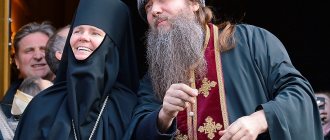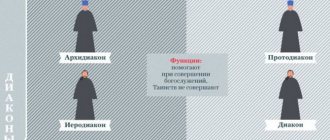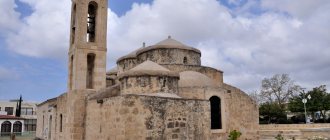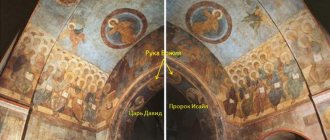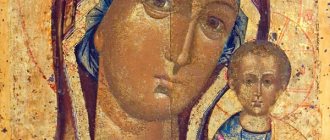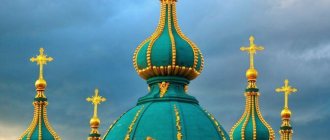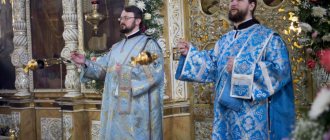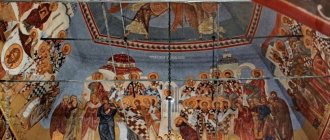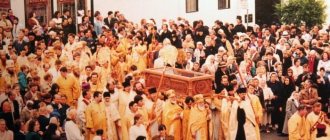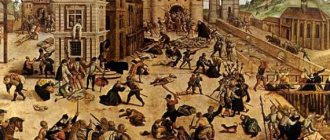Estate structure
In the 17th century, the clergy was considered the second most important among all classes. Only the feudal lords were more powerful. The role of the clergy was very serious. Orthodoxy was considered one of the foundations of autocracy, so the Russian tsars needed the support of the church. In this regard, they provided many privileges and made many concessions.
By this time the clergy was divided into black and white. The latter consisted of priests who did not take monastic vows. In other words, he had the right not to remain celibate and could marry and have children. Representatives of the black clergy - monks - were deprived of this opportunity. The clergyman made such a decision independently and, before taking the rank, finally confirmed his intentions. Each branch had certain rights and responsibilities. The white clergy outnumbered the black clergy. Also, by the end of the 17th century, a strict hierarchical ladder in the class had developed.
For the white clergy it looks like this:
- Patriarch
- Metropolitan
- Bishop/Bishop
- Priest/Archpriest
- Deacon/Protodeacon.
For black:
- Patriarch
- Metropolitan
- Bishop
- Archimandrite/Hegumen
- Hierodeacon/Hieromonk
As a result, both white and black clergy submitted to the Patriarch. He had unlimited rights.
Rights of white and black clergy
The priests had the right:
- get married and have families;
- have a personal home and household;
- serve in a specific church. In the 17th century, very often ministry in a particular church was inherited from father to son.
Rights of monks:
- live and work on the territory of the monastery;
- use common property, monastery lands and serfs. When taking monastic orders, clergy lived in the brethren and did not have personal material or land wealth.
Responsibilities
The white clergy was obliged to preach the word of God and bring it to the masses. In other words, conduct services in the temple, talk with parishioners. Also, the duties of the priests included conducting sacred sacraments.
It was the responsibility of the black clergy to set an example of service to God that was selfless and voluntary. The monks doomed themselves to an ascetic lifestyle with hardships and constant prayers.
Church ranks of the Orthodox Church
All of the church ministers listed above are not clergy. These are simple peaceful people who want to get closer to the church and the Lord God. They are accepted into their positions only with the blessing of the priest. Let's start looking at the ecclesiastical ranks of the Orthodox Church from the lowest.
The position of deacon has remained unchanged since ancient times. He, as before, must help in worship, but he is prohibited from independently performing church services and representing the Church in society. His main responsibility is reading the Gospel. Currently, the need for the services of a deacon is no longer required, so their number in churches is steadily decreasing.
This is the most important deacon at a cathedral or church. Previously, this rank was given to a protodeacon, who was distinguished by his special zeal for service. To determine that this is a protodeacon, you should look at his vestments. If he wears an orarion with the words “Holy! Holy! Holy,” that means he’s the one in front of you. But at present, this rank is given only after a deacon has served in the church for at least 15–20 years.
It is these people who have a beautiful singing voice, know many psalms and prayers, and sing at various church services.
This word came to us from the Greek language and translated means “priest.” In the Orthodox Church this is the lowest rank of priest. The bishop gives him the following powers:
- perform divine services and other sacraments;
- bring teaching to people;
- conduct communion.
The priest is prohibited from consecrating antimensions and performing the sacrament of ordination of the priesthood. Instead of a hood, his head is covered with a kamilavka.
This rank is given as a reward for some merit. The archpriest is the most important among the priests and also the rector of the temple. During the performance of the sacraments, archpriests put on a chasuble and stole. Several archpriests can serve in one liturgical institution at once.
This rank is given only by the Patriarch of Moscow and All Rus' as a reward for the kindest and most useful deeds that a person has done in favor of the Russian Orthodox Church. This is the highest rank in the white clergy. It will no longer be possible to earn a higher rank, since then there are ranks that are prohibited from starting a family.
Nevertheless, many, in order to get a promotion, leave worldly life, family, children and go into monastic life forever. In such families, the wife most often supports her husband and also goes to the monastery to take monastic vows.
Changes in the life of the clergy in the 17th century
The 17th century is characterized by the strengthening of spiritual power. Kings listen to the church with great desire. The wealth of the monasteries is also growing. The possessions and products of which were not subject to taxes by the state. But, despite this, in 1649, according to the Council Code, a special Monastic Order was created, which served as the highest judicial body over the clergy in the Russian state. Thus, all legal proceedings against church ministers were carried out by secular government bodies.
This state of affairs did not entirely suit the top clergy. The head of the church began to fight for his rights. Here the leading position was taken by Patriarch Nikon, who was close to Tsar Alexei Mikhailovich. The head of the church was a powerful, wise man and believed that spiritual authority should stand above secular authority and not be subordinate to it. The patriarch begins to take radical measures. In the 1650s-60s. Nikon is carrying out a church reform that has made fundamental changes to the foundations of the church. One of the results of the reform was the abolition of the Monastic Order and the return of the trial of priests to the hands of the church. In addition, the reform led to a split within the church - the Old Believers, led by Avvakum, separated. The latter were deprived of all rights and privileges, excommunicated from the church and expelled from cities and villages.
Nikon wanted more: to subordinate the state to the church, but Alexey Mikhailovich made it clear to the Patriarch that he was not satisfied with his further actions. As a result, Nikon was removed from the rank of Patriarch, and he was forced to go into exile.
Secular clergy
The description of people who serve the Church and the Lord comes from the Old Testament. The scripture says that before the Nativity of Christ, the prophet Moses appointed people who were supposed to communicate with God. It is with these people that today's hierarchy of ranks is associated.
Altar server (novice)
This person is a lay assistant to the clergy. His responsibilities include:
If necessary, a novice can ring bells and read prayers, but he is strictly forbidden to touch the throne and walk between the altar and the Royal Doors. The altar server wears the most ordinary clothes, with a surplice thrown over the top.
This person is not elevated to the rank of clergy. He must read prayers and words from scripture, interpret them to ordinary people and explain to children the basic rules of Christian life. For special zeal, the clergyman can ordain the psalmist as a subdeacon. As for church clothes, he is allowed to wear a cassock and a skufia (velvet cap).
This person also does not have holy orders. But he can wear a surplice and an orarion. If the bishop blesses him, then the subdeacon can touch the throne and enter through the Royal Doors into the altar. Most often, the subdeacon helps the priest perform the service. He washes his hands during services and gives him the necessary items (tricirium, ripids).
Clergy towards the end of the 17th century
By the end of the 17th century, the clergy was one of the most powerful, rich and numerous. In essence, the church and monasteries lived according to their own laws. There was no state control over the clergy. The Monastic Order, the only restriction on the rights of the church, ceased to exist during the reign of Alexei Mikhailovich. But still, the clergy was forced to recognize the supremacy of secular power.
Literature:
- Smolich I.K. History of the Russian Church. 1700-1917. M., 1996. Part 1
- Stefanovich P. S. Parish and parish clergy in Russia in the XVI-XVII centuries. M., 2002
5/5 — (1 vote)
Black clergy
It includes only those who have taken monastic vows. This hierarchy of ranks is more detailed than that of those who preferred family life to monastic life.
This is a monk who is a deacon. He helps clergy conduct sacraments and perform services. For example, he carries out the vessels necessary for rituals or makes prayer requests. The most senior hierodeacon is called “archdeacon.”
This is a man who is a priest. He is allowed to perform various sacred sacraments. This rank can be received by priests from the white clergy who decided to become monks, and by those who have undergone consecration (giving a person the right to perform the sacraments).
This is the abbot or abbess of a Russian Orthodox monastery or temple. Previously, most often, this rank was given as a reward for services to the Russian Orthodox Church. But since 2011, the patriarch decided to grant this rank to any abbot of the monastery. During initiation, the abbot is given a staff with which he must walk around his domain.
This is one of the highest ranks in Orthodoxy. Upon receiving it, the clergyman is also awarded a miter. The archimandrite wears a black monastic robe, which distinguishes him from other monks by the fact that he has red tablets on him. If, in addition, the archimandrite is the rector of any temple or monastery, he has the right to carry a rod - a staff. He is supposed to be addressed as “Your Reverence.”
This rank belongs to the category of bishops. At their ordination, they received the highest grace of the Lord and therefore can perform any sacred rites, even ordain deacons. According to church laws, they have equal rights; the archbishop is considered the most senior. According to ancient tradition, only a bishop can bless the service with an antimis. This is a quadrangular scarf in which part of the relics of a saint is sewn.
This clergyman also controls and guards all monasteries and churches that are located on the territory of his diocese. The generally accepted address to a bishop is “Vladyka” or “Your Eminence.”
This is a high-ranking clergy or the highest title of bishop, the oldest on earth. He obeys only the patriarch. Differs from other dignitaries in the following details in clothing:
- has a blue robe (bishops have red ones);
- The hood is white with a cross trimmed with precious stones (the rest have a black hood).
This rank is given for very high merits and is a badge of distinction.
The highest rank in the Orthodox Church, the main priest of the country. The word itself combines two roots: “father” and “power”. He is elected at the Council of Bishops. This rank is for life; only in the rarest cases can it be deposed and excommunicated. When the place of the patriarch is empty, a locum tenens is appointed as a temporary executor, who does everything that the patriarch should do.
This position carries responsibility not only for itself, but also for the entire Orthodox people of the country.
The ranks in the Orthodox Church, in ascending order, have their own clear hierarchy. Despite the fact that we call many clergy “father,” every Orthodox Christian should know the main differences between dignitaries and positions.
The Orthodox clergy is a special class that appeared in Rus' in 988, after the Baptism of Rus'. History is silent about how the situation with the clergy was before this period, but it is known that the priest Gregory traveled with Princess Olga to Constantinople. At a time when the clergy was entrusted with a special and very important mission - the Christianization of the population, priests were considered a special and privileged class. Many came from Greece and Bulgaria; even children from different classes were selected for education as the future clergy. The monks enjoyed special honor and respect, and the ascetic culture turned out to be especially close to the people. Rich and noble people of that time went to the monastery. In addition, monasteries have always carried out charitable work. The princes favored the monasteries and freed them from taxes. No exact information has been preserved about who became the first Metropolitan of Kyiv. Since the 16th century, it was believed that he was Michael I the Syrian, who was once sent to perform the Sacrament of Baptism over Prince Vladimir. In Kyiv, he baptized local residents. The relics of Metropolitan Michael were kept in the Church of the Tithes, but then they were transferred to the Great Church of the Lavra.
The confessor stood lower on the social ladder than many of his children
Still from the film “Andrei Rublev”, conversation between Andrei and Daniil, dir.
A. Tarkovsky (1966) In Peter’s time there was a crisis of clergy, which was also a consequence of the schism of the 17th century.
One of the first synodal resolutions states that priests, without the knowledge of the ruling bishop, can no longer impose penances associated with excommunication from Communion. The reason for this “relaxation” was that schismatics, having a low regard for what was happening in the Patriarchal Church, could come to confession, commit terrible sins on themselves, be excommunicated from Communion for several years in advance and live peacefully, without arousing suspicion due to their that they don't go to church.
Also during the synodal period, in order to control the Old Believers, a strict parish system was introduced: all residents of a certain quarter, village, district had to go to a church located in this area and confess and receive communion there at least once a year. The priests kept special books where a note was made about this.
Another serious problem of the Synodal period was that the priesthood as a class was lower on the social ladder than the educated classes, the nobility, for example. (Only the bishop, according to Peter’s table of ranks, was equated with a privy councilor or general). This gave rise to a condescending attitude, and at the same time, distrust of the priest.
Sometimes prominent Russian bishops became confessors for the educated part of society. For example, Saint Philaret Drozdov has many letters of clergy content, mostly addressed to noble women. Apparently, then, as now, there were more women in the temples.
But the talk that in the synodal era the Eucharistic crisis came and people began to receive communion rarely has no evidence base, since it does not follow from anything that they used to receive communion more often.
Notes
- Golubinsky, 1901, p. 305.
- Valentin Lavrentievich Yanin. Domestic history: D-K. Great Russian Encyclopedia, 1994. P. 104.
- ↑ 12345
ESBE, 1893. - Olga Yokoyama. Letters from Russian peasants. Texts and contexts. Languages of Slavic culture, M., 2014. P. 270.
- On the ordination of celibate persons who are not monastics. Historical and legal commentary // ZhMP No. 1, January 2012.
- Korkunov N. M.
Russian state law. — Volume I. — Chapter III. — SPb: Type. M. M. Stasyulevich, 1901. - Mangileva, Anna Vladimirovna. White parish clergy of the Russian Empire: from class to profession // News of the Ural Federal University. Ser. 2, Humanities. 2014.№ 3 (130) (2014).
- Golubinsky, 1901, p. 356.
- Golubinsky, 1901, p. 378.
General concept
“Clergy” is a generalized concept that serves to designate a social group whose representatives are ministers of a religion on a professional basis. As a rule, this term is used in relation to monotheistic religions (recognizing only one or a single God).
There is another name for this community - “clergy”, which comes from the Greek word meaning “lot”. The division between clergy and laity (members of the church who are not priests) began in the days of the early church, when the apostles (followers of Jesus Christ who preached his teachings) enjoyed special authority in the religious community.
During this period, the church hierarchy began to emerge. The laying on of hands on the ordained candidate began to be seen as a sign of belonging to the clergy - the clergy. In the early church, until the end of the 4th century, the clergy included:
- bishops;
- elders;
- deacons;
- subdeacons;
- acolytes;
- readers;
- exorcists;
- protectors of bonds;
- deaconesses
In Catholicism
In Latin Rite Catholicism, celibacy is mandatory for all priests; the white clergy includes diocesan priests who have not taken monastic vows (lat. clerici saeculares), and the black clergy includes priests belonging to one of the monastic orders.
| This section of the article has not been written. According to the plan of one or more Wikipedia contributors, a special section should be located in this place. You can help by writing this section. This mark was set on March 9, 2022 . |
What is the main task of a confessor?
O. John of Kronstadt.
From the site https://tihvinskiy.ru/ Everyone sees or imagines themselves in a certain way and often not as they are, but as they want to appear to themselves. However, it is impossible to lead a spiritual life without seeing your real self - this is one of the main, or at least the first, tasks of a confessor.
I'll give you an example. A man comes and says: I help everyone, I wish good, but my loved ones do not accept this good, they offend me. In fact, most likely such a person does not hear anyone except himself, and in life it is very difficult to live with him. He knows exactly how each of his loved ones should live and act, but what his loved ones themselves think about this is not interesting to him.
And, of course, he runs into resistance, because no one needs his “good” in this form. If this is so, then the task of the confessor is, first of all, to help this person realize that it is not him who is being offended, but he himself does not hear anyone but himself, and explain all this to him in such a way that he wants to change it.
Not all confessors will probably agree with me, but it seems to me that a confessor is needed not to lead a person by the hand from infancy to the grave, but to teach him to walk. After all, people often come for advice in the hope that the confessor will bless, and therefore take responsibility for the decision they have already made, but this is wrong. Fear of responsibility is not a virtue.
Yes, the confessor does not always know everything. Father Valerian Krechetov, a wonderful confessor, says that sometimes a person comes to him, but he doesn’t know what to say, and then he honestly admits it: I don’t know, let’s pray, and let the Lord show us. Or, perhaps, it is worth sending a person to a more experienced confessor, if there is a need for this. All this is part of the normal process of communication between a confessor and his child.
Hierarchy of the black clergy
The black clergy has its own rules:
The Patriarch is still considered the head of the Church. And the head of several dioceses is the Metropolitan. A diocese can be headed by a bishop or archbishop (for the largest dioceses). The abbot of a large monastery and the highest monastic rank is the Archimandrite. This status is given for special services to the Church. The abbot of the monastery, chosen by the hieromonks, is the abbot. Interestingly, a widower priest can also become an archimandrite after monastic tonsure. The inhabitants of the monasteries are Hierodeacons and Hieromonks.
The choice of faith today is a personal matter for everyone. Now the church is completely separated from the state, but a completely different situation developed in the Middle Ages. In those days, the well-being of both an individual and society as a whole depended on the church. Even then, groups of people were formed who knew more than others and could convince and lead. They interpreted the will of God, which is why they were respected and sought advice. What is the clergy? What was the clergy of the Middle Ages like, and what was its hierarchy?
How did you become representatives of the clergy?
In those days, the younger sons of feudal lords who could not inherit their father’s fortune could go to the monastery. If a poor peasant family was unable to feed a child, he could also be sent to a monastery. In the families of kings, the eldest son took the throne, and the youngest became the bishop.
In Rus', the clergy arose after Our white clergy are people who did not, and still do not, take a vow of celibacy, which was the reason for the emergence of hereditary priests.
The grace that was bestowed on a person during his elevation to the priesthood did not depend on his personal qualities, therefore it would be wrong to consider such a person ideal and demand the impossible from him. No matter what, he remains a person with all his advantages and disadvantages, but this does not negate grace.
Confessor today
Optina elders.
From the site https://pravlife.org/ Speaking about today, it is important to remind one thought of St. Ignatius Brianchaninov. He was a child of Elder Leo of Optina and had good relations with the Optina elders, but firmly stated that “we have no spirit-bearing fathers.” A Christian, however, must have a confessor, but a confessor differs from a spirit-bearing elder in that relations with him cannot be based on absolute obedience.
It is difficult for us to actually judge what and how happened in the 19th century, and whether St. was mistaken. Ignatius, but we are forced to admit that today the spiritual tradition of Russian eldership has been stopped.
In the Optina Hermitage it was passed from elder to elder and ended in the 20th century; in Pechory after the war there was a meeting of elders, there were wonderful confessors in Soviet times, but there is no feeling that they left a replacement for themselves. Let everyone who thinks otherwise forgive me.
Eldership as the “art of holiness” can only be learned through live communication. Elder Leo, when he was dying, called the Monk Macarius and the future Ambrose of Optina, then still a novice, and said to St. Macarius: “Here I am dying and handing him over to you from floor to floor, now you educate him.”
A confessor who is not an elder cannot take full responsibility for the present and future life of his child, but a confessor can give advice. Anyone coming to him should be ready to hear the advice that will be given to him, and not wait for the answer that he himself came up with in advance.
Maybe he will not agree and will act differently as a result, but listening and being heard is very important.
How to choose a confessor? You can take the advice of the same Saint Ignatius: first of all, judge whether your confessor is advising anything contrary to the Gospel.
Now there are many churches and you can find a priest who suits your heart. And if not only mental, but also spiritual contact arises with him, then there will definitely be benefits. In addition, when a person constantly goes to one priest, there is every reason to think that the priest will pray for him, and this is already a lot.
And if you go to different priests, you can hear different advice, and in the end you choose what you like best, and not what you really need to choose.
In general, it is very important to have trust in your confessor. Nothing so hopelessly spoils the relationship between a confessor and his children as resentment against the confessor, which is most often caused by the fact that people do not want to “share” the confessor with his other children. It seems to a person that the confessor listens to someone longer than him, and pays more attention to someone. Jealousy appears, which leads to resentment; resentment gives rise to mistrust. And when there is mistrust, then how can you ask your confessor about something?
Yes, the confessor is not always right, and he may say something harsh undeservedly. But still, if you have been going and trusting this person for many years, you need to drive away resentment from yourself - sometimes a bitter pill can be useful.
God, perhaps, even covers us in some way, and gives the confessor something really useful and necessary to say, if we are not offended by the confessor.
But if trust is lost for some reason, then it’s probably more honest to leave. In any case, experience shows that sorting things out in such cases is, as a rule, useless.
In fact, it is very difficult to derive general formulas into which you just substitute the value and get the finished result. These are always personal individual relationships that should be based on trust, mutual prayer and, ultimately, on spiritual love, and not on spiritual attachment, which tends to replace these correct relationships and leads to jealousy and resentment. But if you manage to build these relationships in the right way, then thank God, this is always luck.
For example, if a person does not want to follow my advice, I say, please do as you see fit, but if you yourself made the decision, then you yourself are responsible for its consequences. I can only pray that the Lord will be merciful.
Degrees of clergy and clergy
A clergyman is a person who is ordained to a special church service. The highest clergy (in ascending line) includes three hierarchical degrees:
- Deacon.
- Priest (presbyter).
- Bishop (bishop).
The clergy are the lower clergy who help the higher one perform divine services. These include:
- The cleric.
- Reader or singer.
- Subdeacon.
Next, we will consider in more detail these categories of higher clergy.
